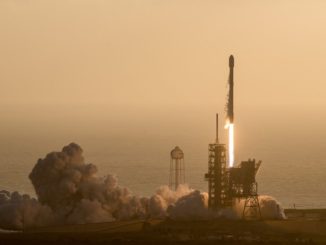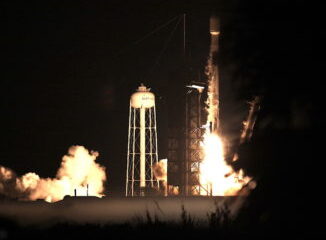Science
SpaceX Launches 450th Falcon Booster in Starlink Mission

SpaceX marked a significant achievement in rocket reusability with the launch of its Falcon 9 rocket from Cape Canaveral Space Force Station during the early hours of August 4, 2025. This mission, named Starlink 10-30, represents the company’s 450th flight of a previously flown booster, a milestone that underscores SpaceX’s commitment to advancing space technology through reusability.
The 450 launches to date include both the Falcon 9 and Falcon Heavy rockets. SpaceX’s journey into reusability began on March 30, 2017, with the launch of the SES-10 satellite, which utilized booster 1021. This particular booster had previously flown on SpaceX’s eighth Commercial Resupply Services mission to the International Space Station on April 8, 2016.
Details of the Starlink 10-30 Mission
For the Starlink 10-30 mission, SpaceX employed booster 1080, which is set to fly for the 21st time. This booster has an impressive flight history, having previously supported Axiom Space’s second and third private astronaut missions, the European Space Agency’s Euclid observatory, and 14 batches of Starlink satellites.
The launch was scheduled to occur from pad 40 at Cape Canaveral at 01:03 EDT (05:03 UTC). Live coverage of the event was provided by Spaceflight Now, beginning one hour prior to liftoff.
The forecast from the 45th Weather Squadron indicated an 85 percent chance of favorable weather conditions for the launch. While meteorologists noted the possibility of cumulus or anvil clouds, they were optimistic about the conditions prevailing at launch time.
According to launch weather officers, “The low-pressure system with associated front has stalled and draped itself along southern Georgia. This system will continue to suppress the Bermuda High and keep the ridge axis to our south for today, which will keep us in a more southerly/southwesterly flow.” They added that isolated thunderstorms and showers might occur in the afternoon but were expected to dissipate by evening.
Booster Recovery and Future Implications
Approximately 8.5 minutes post-launch, booster 1080 aimed to land on the SpaceX droneship, ‘Just Read the Instructions’. If successful, this landing would represent the 131st recovery on this vessel and the 485th booster landing overall for SpaceX.
The Starlink 10-30 mission marks SpaceX’s 69th Starlink launch of the year, contributing to the company’s impressive track record of more than 1,650 Starlink satellites launched in 2025 alone. This mission not only reflects SpaceX’s technological advancements but also its ongoing efforts to provide global internet coverage through its satellite constellation.
As the aerospace industry continues to evolve, SpaceX’s accomplishments in reusability and satellite deployment signify a new era in space exploration and satellite communication. With each successful launch, the company demonstrates its potential to reshape access to space and connectivity on a global scale.
-

 Technology5 months ago
Technology5 months agoDiscover the Top 10 Calorie Counting Apps of 2025
-

 Health3 months ago
Health3 months agoBella Hadid Shares Health Update After Treatment for Lyme Disease
-

 Health3 months ago
Health3 months agoErin Bates Shares Recovery Update Following Sepsis Complications
-

 Technology4 months ago
Technology4 months agoDiscover How to Reverse Image Search Using ChatGPT Effortlessly
-

 Technology1 month ago
Technology1 month agoDiscover 2025’s Top GPUs for Exceptional 4K Gaming Performance
-

 Technology3 months ago
Technology3 months agoElectric Moto Influencer Surronster Arrested in Tijuana
-

 Technology5 months ago
Technology5 months agoMeta Initiates $60B AI Data Center Expansion, Starting in Ohio
-

 Technology5 months ago
Technology5 months agoRecovering a Suspended TikTok Account: A Step-by-Step Guide
-

 Health4 months ago
Health4 months agoTested: Rab Firewall Mountain Jacket Survives Harsh Conditions
-

 Lifestyle5 months ago
Lifestyle5 months agoBelton Family Reunites After Daughter Survives Hill Country Floods
-

 Health3 months ago
Health3 months agoAnalysts Project Stronger Growth for Apple’s iPhone 17 Lineup
-

 Technology4 months ago
Technology4 months agoHarmonic Launches AI Chatbot App to Transform Mathematical Reasoning


















